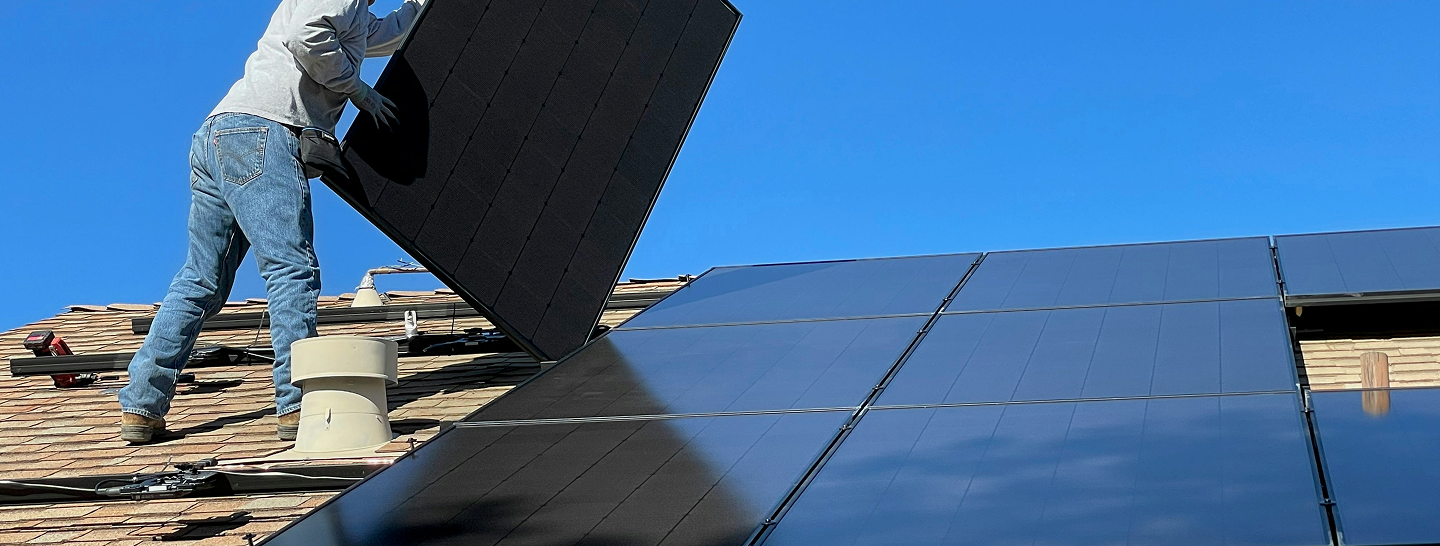The Federal Solar Tax Credit Expires Dec. 31, 2025
The 30% Federal Solar Tax Credit Expired on Dec 31st, 2025. Here's How the ROI of Solar Has Changed.

Important Update: as of 12/31/25, the 30% solar tax credit is no longer in effect. This article has been updated to preserve information about the tax credit for reference purposes, and to show how solar ROI has changed without the credit.
What Was the Federal Solar Tax Credit?
The federal solar tax credit allowed qualifying homeowners to recover 30% of their solar project costs by claiming the credit on their taxes. However, due to recent federal policy changes, the credit expired on Dec. 31, 2025.
While the expiration of the credit certainly makes solar more expensive up front, our outlook on the long-term value of solar hasn't changed. Over the typical 25-year lifespan of a solar power system, solar still costs less than utility power.
Even without the 30% tax credit, the average American home can expect a DIY solar installation to pay for itself in 9.2 years, with traditional full-service installations offsetting their cost in 18.4 years. Since solar panels are warrantied to last 25+ years, the math still works out favorably for solar. (We'll show our work below.)

The ROI of Solar: Before and After the Tax Credit
Let's take a look at how the return on investment into solar is calculated - both with and without the tax credit. The figures below are based on national average electricity consumption and billing rates in the United States.
Baseline assumptions:
- 6.5 kW Enphase IQ8 micro-inverter kit: approx. $14,000 (includes estimate for taxes, shipping and permitting fees)
- $0.1522/kWh electricity costs (national average)
- 10,000 annual kWh usage (national average)
- 25-year utility cost at these rates: $38,050
The 6.5 kW kit is sized to eliminate the electric bill entirely for this usage level.
It's important to know that SolarTown is an equipment supplier, and that the $14,000 project estimate does not include the cost of installation. Our solar energy kits are tailored for people who plan to install their own system. However, for the sake of comparison, we'll run the numbers for both scenarios (DIY solar vs. a full-service install) to show how solar stacks up to utility power in each scenario.
Based on 2024 NREL data, DIY solar runs about half the cost of full-service installation, so we'll use $28,000 for the turnkey scenario.
With the groundwork finally laid, it's finally time to do the math on the payback period of solar. We'll run the numbers four times: with and without the tax credit, for both DIY and full-service installations. Our formula is as follows:
With the tax credit (now expired):
- DIY installation: ($14,000 - $4,200) / $0.1522 per kWh / 10,000 kWh = 6.44 years
- Full-service installation: ($28,000 - $8,400) / $0.1522 per kWh / 10,000 kWh = 12.88 years
Without the tax credit:
- DIY installation: $14,000 / $0.1522 per kWh / 10,000 kWh per year= 9.2 years
- Full-service installation: $28,000 / $0.1522 per kWh / 10,000 kWh per year = 18.4 years
Is Solar Still Worth It After the Tax Credit?
Using the standard 25-year panel warranty as our benchmark:
DIY installation: 9.2-year payback leaves 15.8 years of zero electric bills. Total savings over 25 years: $24,050 ($38,050 in utility costs - $14,000 system cost).
Full-service installation: 18.4-year payback leaves 6.6 years of zero electric bills. Total savings over 25 years: $10,050 ($38,050 in utility costs - $28,000 system cost).
There is still a strong financial case for DIY solar: 15+ years of free electricity after the system pays for itself. The margins are tighter when working through a full-service installer, but it can still be an attractive option depending on regional factors influencing project costs. Some things to look out for:
- local cost of electricity: the higher the cost, the more attractive solar becomes in comparison
- compare quotes from multiple providers: more populated areas come with more competition between providers, which can lead to more attractive bids
- local incentives: while the federal tax credit has expired, many state and city jurisdictions offer incentives that can change the payback period math. (See our article on local solar incentives in all 50 states.)

Local Solar Incentives Change the Math
The comparison above assumes that the buyer receives no assistance beyond the expired tax credit. In reality, many homeowners qualify for state or local programs that apply to both DIY and professional installations.
While our article on local solar incentives gives a general overview of what to expect, the fastest way to explore what's available in your area is to visit the Database of State Incentives for Renewables & Efficiency. Simply punch in your ZIP code to pull up a complete list of active solar incentives available in your area.
Local incentives come in many forms, including:
- Local tax credits (relief from state income taxes)
- Discounts and Rebates on components
- Favorable net metering policies (discounted utility rates for solar interconnected homes)
- SRECs (Solar Renewable Energy Certificates), which can be sold for extra income to organizations to help them meet government-mandated renewable energy goals
- Utility buyback programs: resale of excess solar power production to the utility for profit
Where strong incentives exist, payback periods drop accordingly. State credits or component rebates could shave years off the timelines above.
Questions About Your Solar Project?
Not sure whether going solar makes sense in your circumstances? Reach out to us for guidance on your project. We'll help you design a custom solar kit that accounts for factors unique to your project, including roof angle, shading patterns, local climate, and (most importantly) regional incentives that will improve the value of your investment into solar.
Get Help With Your Solar Project
Talk through system sizing, equipment options, and available incentives with our solar technicians.
Get In Touch